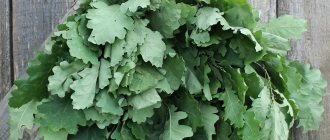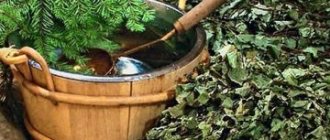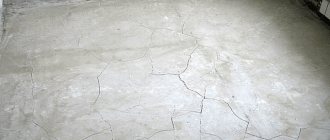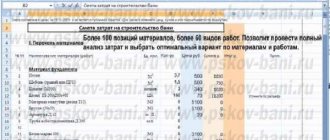Bitumen mastic is often used to waterproof various surfaces. It was popular back in Soviet times, but since then technologists have significantly improved the composition, making the material even more in demand on the waterproofing coating market.
What is bitumen mastic?
When carrying out work to protect the roof, walls or floors of some premises from moisture and leaks, bitumen waterproofing or mastic is used. This is a pasty substance that has a distinctive rich black color and is completely waterproof after drying and has excellent astringent properties. It is made on the basis of bitumen with the addition of some elements that determine the performance characteristics of the composition.
Composition of bitumen mastic
The chemical composition of such mastic may vary somewhat depending on the manufacturer’s recipe, but it always contains:
- Bitumen resins as a base-forming component. They make the composition waterproof and have excellent adhesion to almost any surface.
- This waterproofing material is often supplemented with various polymer fillers to enhance hydrophobic properties, for example, latex.
- For density, the following are added: asbestos dust, brick or quartz powder, mineral wool or combined ash.
- The consistency of the composition and thermal insulation properties are improved by ground asbestos, chalk or peat chips.
- The material has high elasticity and tensile strength due to various fiber fillers.
- Herbicides and antiseptics may be added to some formulations.
Price
The cost of waterproofing material depends on many different factors.
The main pricing criterion is the composition of the bitumen mastic, the type of base and solvent used. Coating waterproofing, which is mixed with synthetic solvents, has a more affordable cost compared to water-based ones.
Hot-applied bitumen waterproofing is less expensive than cold-applied materials. Products of these types may differ in cost by 3-5 times .
If solid bitumen, which is applied hot, costs an average of 25-30 rubles per kilogram, then high-quality premium water-based mastic can cost up to 150-200 rubles / kg.
For comparison, we suggest considering a table with prices for liquid coating mastic of several brands popular in the domestic building materials market:
| Brand | Average price per 1 kg | Packing |
| TechnoNIKOL | 80 rub | 18 kg |
| Aquaizol | 120 rub. | 10 kg |
| Aquamast | 70 rub | 18 kg |
| Bitumast | 100 rub | 18 kg |
Everything you need to know about foundation waterproofing can be found in this section.
Properties of bitumen mastic
For decades, bitumen insulating material has been one of the most popular waterproofing compounds on the market due to its operational and physical properties:
- Bitumen mastic is very elastic. It not only has good adhesion to the surface being treated, but also withstands fluctuations in its area when exposed to high or low temperatures.
- Such resins have adhesive properties, so they are used for fixing rolled materials.
- Complete waterproofness, which is valued more than others.
- This coating can protect the surface from corrosion and mechanical damage.
- The special resin is resistant to temperature changes and can withstand both extremely low temperatures in regions with harsh climates and hot weather.
- The completely dry coating can be painted in any color to give a more aesthetic appearance if necessary.
What is bitumen mastic used for?
Waterproofing material based on bitumen mastic is used for the following types of work:
- Bitumen mastic is used for new roofs, as well as when repairing old ones to remove waterproofing cavities.
- When installing artificial reservoirs: ponds, fountains and pools.
- When renovating rooms with high humidity levels to protect surfaces from moisture: bathrooms, saunas, basements, balconies and others.
- To protect the foundation and the junction of the roof with other functional elements from the effects of precipitation.
- Bitumen mastic is also used to protect metal elements from corrosion.
- When installing some types of roll insulation, this composition is used instead of glue.
Video description
And finally, a short video for everyone who is just thinking about building their own home and studying material on this topic:
Bituminous mastic has all the necessary properties that allow it to be effectively used for waterproofing and protecting a home from moisture. And knowing the information provided, you can exercise effective control over the execution of work. After all, no one knows better than the customer what he needs. And in order to get the desired result, you should maintain feedback and, if necessary, make adjustments.
Pros and cons of bitumen mastic
Like other building materials, bitumen waterproofing mastic has a number of advantages and disadvantages. Its advantages include:
- Uniform coating without butt seams where leaks are possible.
- Completely hydrophobic. Bitumen mastic is a non-porous composition, after drying, a film is formed on the surface of which, completely repelling water.
- The composition is resistant to natural factors and many aggressive chemicals.
- Protects metal from corrosion and can be applied directly to rust.
- The material has high elasticity and no shrinkage, so bitumen can be used on moving parts of joints and in conditions of strong temperature fluctuations.
- Reasonable cost and economical consumption.
- Ease of application and the ability to repair already painted surfaces.
Among the disadvantages of the substance, professionals note:
- High fluidity, due to which the composition can only be applied to a flat surface in a thin layer. When tilted, the mastic simply flows off.
- When exposed to ultraviolet radiation, the composition may dry out and crack.
How to determine consumption
The consumption is affected by the layer thickness and the amount of dry residue.
The mastic is characterized by the dry residue content. It means the volume of the substance on the plane after the mastic has dried and hardened. The index is expressed as a percentage of the total consumption of material used. The indicator means that a small dry residue leads to an overconsumption of the initial mass in order to obtain a layer of the required thickness according to the technology.
Most materials are characterized by a dry residue index of 20 – 70%. The consumption of material with a high percentage will be 3 times less to form the desired thickness than with a rate of 20%. In addition to the cost, the labor intensity of the work increases.
To find the material consumption for the entire surface, you need to know:
- standard layer thickness;
- amount of dry residue after curing.
For example, if the remaining material is 50%, 1 kg of mastic contains 0.5 kg of working substance and 0.5 kg of solvent. After drying, 0.5 kg of waterproofing will remain on the surface when applying 1 kg of mastic.
After finding the specific consumption, taking into account the residue after curing and the thickness of the coating, the number of layers on the surface is determined.
To waterproof a roof using fiberglass, you need 2 to 3 layers of base material. In this case, 3 - 4 layers of bitumen mastic with a thickness of 1.5 - 2 mm will be required.
Consumption depends on the density of the mass and the temperature of the solution.
Consumption rates for different application methods
Cold mastics are more convenient to use; they are used for adhesive layers between roofing layers and as waterproofing of free-standing structures. Hot materials are more resistant to external influences; materials must be completely homogeneous and spread over the surface in a layer of at least 1 mm.
Thickness standards depending on the cold and hot method:
- the thickness of the mastic layer for the hot lining material is at least 2 mm ;
- cold can be used with a thickness of at least 1 mm .
For one square in one layer, 1 - 2 kg of cold material in a solvent is consumed, 1.5 - 2 kg of cold bitumen mastic in water, 2 kg of hot mass. The surface area of the coating is multiplied by the mastic consumption, then multiplied by the number of layers.
Calculation for foundation waterproofing
To calculate the flow rate, you need to calculate the area of the foundation and multiply by the thickness of the layer.
Foundations come in different types. The easiest way to calculate the consumption is for the tape type . In this case, find the quadrature of the entire surface that needs to be coated with the composition.
The procedure for determining the area:
- multiply the width of the tape by the length to obtain the horizontal area;
- multiply the lateral height by the length of the tape, then by 2 to obtain the quadrature of the lateral planes;
- sometimes you need to calculate the area of the ends;
- For each individual plot, the area is calculated, then the indicators are added up.
To coat the foundation in one layer per square meter, use 1 - 1.5 kg of cold solvent-based mastic, 1 - 1.5 kg of cold water-based mastic, and 2 kg of hot mastic.
The resulting quadrature of the treated surface is multiplied by the squared consumption, then multiplied by the number of layers. Waterproofing the foundation requires at least two layers of coating composition.
Calculation for roof waterproofing
Roofing work involves not only gluing various layers of glass fabric and fiberglass. Waterproofing mastic is also used for a full topcoat. In this case, the last layer must have a thickness of at least 2 mm.
Mastic paste consumption:
- when laying cold with two layers of fiberglass and three layers of mastic, the total consumption per square will be 3.5 - 6 kg;
- when applied with heating, the total consumption rate per square of roof with the same composition will be at the level of 6 kg;
- if seams between reinforced concrete floor slabs are to be sealed, then the consumption rate is taken to be 145 - 157 kg for every 100 m of joint (with a slab thickness of 200 mm).
Calculate the roof area and multiply it by the standard consumption. Since the maximum indicator is given for several layers at once, there is no need to additionally multiply by the number of layers.
What is the difference between primer and bitumen mastic?
Based on petroleum construction bitumen, not only waterproofing mastic is made, but also other materials, for example, bitumen primer. These compositions have differences:
- Mastic has a denser and more viscous structure, therefore it is used as the main hydrophobic coating. The primer is more liquid. It is needed to prepare the surface for further waterproofing layers, to fill all the gaps and cracks.
- The primer is used as a binding component in road works and as a protective coating for pipelines. A viscous analogue is often needed to protect surfaces from moisture.
- The primer dries much faster than its viscous counterpart.
Brief overview of the work process
In order to be able to control the quality of the house construction work, as well as its component parts, it is necessary to have at least a general understanding of the nuances. For example, if you plan to use rubber-bitumen mastic, you should know that it is suitable for a temperature range of -50°...+110° degrees Celsius. But before that, you should definitely warm it up at least at +5°. There are also relevant questions regarding the tools used. There are two options here:
- Hand tool. It is better suited in cases where it is necessary to treat small areas of coverage, apply bitumen mastic in limited space and cramped conditions.
- Mechanical tool. Used when working with large areas. Using a compressor with installed sprayers allows you to quickly treat the surface of the foundation with a composition from cylinders.
Mechanical tools are synonymous with fast work. Source nashaotdelka.ru
Knowing small nuances, you can assess the qualification level of those who will perform the work. By the way, bitumen-rubber mastic is suitable not only for working on the house, but is also loved by motorists. This material has good adhesion and is used with equal success on both horizontal and vertical planes. It provides protection not only for concrete and wood, but also for metals. The matter is not limited to the material.
At the same time, the challenge associated with finding reliable and efficient builders is relevant. Everyone chooses for themselves who will be involved in making the dream of their own home come true. But before doing so, it is advisable to compare at least several different companies to get the best idea of how things stand.
Types of bitumen mastic
The building materials market offers a large selection of waterproofing compounds. According to application technology, bitumen mastic can be:
- cold;
- hot.
The division can also be carried out according to the type of elastic additives used in the composition, thus distinguishing:
- Rubber-bitumen mastic
with fine rubber crumbs. It has a high level of adhesion and does not require surface cleaning before application. - Bitumen-rubber mastic
is the most highly elastic material. It is used for gluing rolled materials and protecting metal surfaces from corrosion. - The bitumen-polymer composition
is made on the basis of aqueous bitumen emulsion and modified latex. Does not contain organic solvents, therefore it is used for interior and exterior work.
Cold bitumen mastic
Cold roofing bitumen mastic is considered the most versatile and widely used. According to the method of preparation, it can be:
- One-component
. This variety is immediately ready for use after opening the package. However, the open jar must be completely used, because the remaining mixture hardens. - Two-component
. Immediately before carrying out work, this composition must be mixed with a thickener. This is convenient when coating application is planned for different times, so you can vary the amount of the finished mixture.
Hot bitumen mastic
Roofing hot bitumen mastic has practically gone out of use. It was the first type of material based on molten bitumen. To use it, the composition must be heated to a temperature of approximately +150…300℃. This increases the work time and requires additional equipment.
However, some craftsmen still prefer to attach rolled soft roofing only to this type because of:
- Creates a particularly durable coating with an elastic layer after drying.
- Possibility of carrying out work at negative air temperatures.
- No pores in the material.
- Low cost composition.
Unlimited material possibilities
Nowadays there are often situations when bitumen mastic is used to fix polystyrene foam to metal, concrete, expanded clay, and wooden surfaces. For horizontal slabs, a load is used, and for vertical slabs, special supports are used.
When lining fireplaces, you also cannot do without a bitumen-polymer strong, bactericidal, durable, heat-resistant adhesive material.
There are also mastics that are used specifically for road repairs. They work in tension and compression, tolerate temperature changes, and have good adhesion. Before you start using it, you don’t need to wait a long time – just an hour and you’re done.
Rubber-bitumen, bitumen-polymer mastics are used for metals and cars. But before application, as in all cases, the surface should be thoroughly cleaned, rinsed and dried.
No matter how durable a material such as concrete is considered, there is a problem of moisture seeping through micropores. Mastic also improves the characteristics of concrete structures by filling all cracks and cracks. The material can be prepared from solid or rubber bitumen, liquefied materials.
Rating of bitumen mastic
Many owners of residential buildings, not knowing which bitumen mastic for waterproofing is best suited in a particular case, resort to reviews of the compositions of professionals. Traditionally, the ranking of the most popular of them includes:
- Bitumen-polymer mastic Technomast No. 21 of the TechnoNIKOL brand
. This brand specializes in the production of similar formulations and is famous for the quality and durability of its products. Cost – $36 for 20 kg. - MBR-90
(hot application) is popular due to its economical consumption and reasonable price. Cost – $5 per 10 kg. - Aquaizol brand mastics
are often used for roofing waterproofing work. Consumers value the brand for its affordable range of products. Cost – $18 per 10 kg.
Compound
Bitumen mastic is a classic product used for coating or painting waterproofing, which is created on the basis of refractory petroleum bitumen. It is a viscous, viscous, thick liquid of a dark color with a pungent odor. When applied and then hardened, the mastic hardens, forming a monolithic film that does not allow water to pass through. This waterproofing material is valued for its economical consumption and ease of do-it-yourself application. Rubber bitumen varies in composition, it is divided into the following categories:
- Bitumen. They are produced on the basis of natural light bitumens, which are by-products of oil refining. They are characterized by low price, less weather resistance and longer service life.
- Polymer. Synthetic rubber mastic is a modern waterproofing material that has increased elasticity, resistance to external factors, and a long service life. The consumption of synthetic rubber bitumen is much higher than that of simple bitumen.
- Bitumen-polymer. Mixtures of natural bitumen, plasticizers that improve the quality of the material, and synthetic rubber combine the positive qualities of both materials and are affordable.
Mastic based on petroleum bitumen is a multifunctional product used in many branches of construction. To make this material suitable for use in a variety of environments, manufacturers produce it in several forms. Much more often the following types of rubber-bitumen are seen on sale:
- Warm rubber mastic. Warm mastic is a rigid waterproofing agent, the use of which is carried out by melting. Rubber-bitumen of this type is melted over a fire at a temperature of 170 degrees so that it turns into a liquid state, after which it is applied to the surface to be treated. This type of mastic is characterized by economical consumption and affordable price. But, using it when working with your own hands is problematic, since it is used only at temperatures from +5 degrees, therefore it requires the use of special equipment.
- Cold mastic. This type of bitumen-based waterproofing material is produced and sold in plastic or iron buckets in liquid form. Immediately after opening the container, it is ready for use, which makes it more ergonomic to use. The consumption and price of cold mastic is higher than hot mastic; therefore, it is used only for spot repairs and for small-scale work.
How to dilute bitumen mastic?
Initially, all manufacturers produce thick bitumen mastic, which fits well only on smooth horizontal surfaces. If it is necessary to apply the composition on a vertical or inclined surface, then it must be diluted. The amount of solvent should not exceed 20% of the total volume of the composition. Otherwise, the material will lose its original properties: adhesion will deteriorate, hardening time will increase, etc.
When choosing how to dilute bitumen mastic to a liquid state, you can use:
- automobile low-octane gasoline;
- White Spirit;
- turpentine;
- kerosene;
- any organic solvent, such as toluene.
Main application in construction
- Waterproofing of various building communications (concrete foundation elements and wooden beams);
- Anti-corrosion protection of iron surfaces (pipelines and steel tanks for various purposes);
- Sealing filling of seams, cracks, chips, etc.;
- Bonding of a number of waterproofing materials;
- Can be used for soils of weak and medium aggressiveness.
When cold, the mastic is supplied in closed containers. It is ready for use, provided the ambient temperature is from -20° to +40°. However, if the application temperature is below +5°, it is required to keep it in a warm room for at least 24 hours. Before work, you should mix thoroughly, and to obtain a more liquid substance, dilution with organic solvents (solvent, white spirit, etc.) is allowed.
Foundation waterproofing
Roofing
Waterproofing walls
DIY bitumen mastic
It is quite possible to make bitumen insulating mastic yourself. To do this you will need:
- Special thick-walled boiler for bitumen cooking with a fireproof lid.
- Dry bitumen – 10 kg.
- Any filler (mineral wool, asbestos, crumbled rubber) – 1 kg.
- Waste oil or gasoline – 0.5 kg.
- Foreman personal protective equipment and fire extinguishing devices.
Work progress:
- Dry bitumen is loaded into a special boiler approximately 2/3 of the volume. The container is placed not directly on the fire, but next to it.
- The mixture is slowly heated, constantly stirred and cooked at a temperature of about +190℃.
- It is important to follow all safety rules: protect the hands and eyes of the master, have extinguishing agents nearby, because the mixture is flammable.
- The plasticizer and filler are added when the foam falls off the surface and the mixture becomes completely homogeneous.
- The resulting composition is thoroughly mixed and heated for about 5 minutes, after which it is used in work.
How to apply bitumen mastic?
There are two technologies for applying bitumen-based compounds:
- Manual method using brushes, spatulas or rollers. The composition is poured onto a flat, smooth surface of a small area and carefully leveled in stages. The disadvantages of the method include the relatively long period of work and the lack of complete control over the thickness of the applied layer.
- Waterproofing walls with bitumen mastic can be carried out using a special sprayer, in which the composition is mixed inside the unit. In addition, such a device must be designed for applying viscous compositions and have a working pressure of about 150 Bar.
Application technology
Before starting waterproofing treatment of the foundation, it is necessary to perform a number of preparatory procedures. First of all, you need to thoroughly clean the treated surfaces from all kinds of contaminants: dust, soil, etc.
You should also get rid of small irregularities and carefully level the horizontal and vertical surfaces of the foundation. Before applying mastic, it is recommended to treat the concrete structure with a layer of primer.
The method of applying mastic depends on the selected material. Liquid bitumen waterproofing is applied using the cold method. The foundation is evenly coated with a layer of mastic using:
- paint brushes,
- spatulas,
- rollers and similar tools.
The coating can also be applied mechanically, using special sprayers operating under pressure. After the first layer has completely dried, the second one is applied.
When applying hot, you need to melt solid bitumen . When heated to a certain temperature, it becomes viscous and fluid - it is in this state that it is applied to the surface of the foundation. In this case, it is necessary to strictly observe precautions so as not to get a thermal burn when coming into contact with hot mastic.
How to use bitumen mastic?
There are certain general recommendations on how universal bitumen mastic is used:
- For most “cold” compounds, the air temperature during work should be from +5 to +20℃.
- The surface is thoroughly cleaned, leveled and dried before application. Some models can also be applied to damp walls or roofs.
- The mastic is prepared or opened immediately before application. For better mixing, use a drill with a mixer attachment.
- Vertical and inclined surfaces must be treated with 2-3 layers of the composition. A new one is applied after the previous one has dried.
- It is better to apply the composition vertically from bottom to top.
- After finishing work, all tools are thoroughly washed, and the remaining mixture is not stored.











